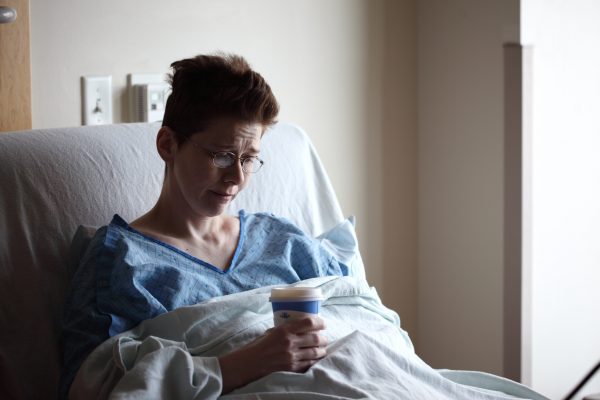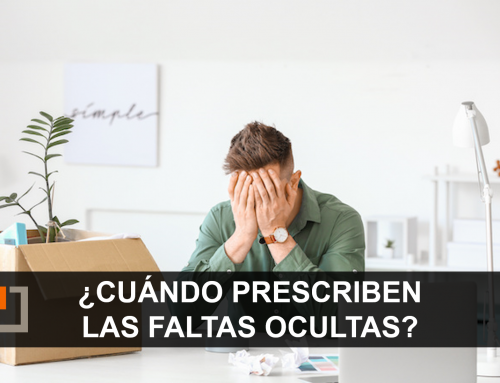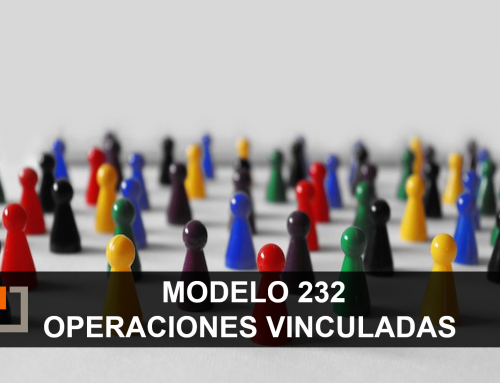Since 12 March 2020, it has been established on an exceptional level that periods of isolation or contagion working people like consequence of the virus COVID-19 have the consideration of a situation assimilated to accident for the purpose of financial benefit for temporary disability of the Social Security system.

In the BOE of 11 March 2020, Royal Decree-Law 6/2020
of 10 March has been published, adopting certain urgent measures in the economic and public health protection field.
This rule, which entered into force on March 12, 2020, has established exceptional character that periods of isolation or contagion of working people such as COVID-19 virus are considered to be an accident at work for the purpose of the temporary disability economic benefit of the Social Security system.
This measure, which is issued on an exceptional basis, relates exclusively to the economic benefit of temporary incapacity, and applies both to employed persons and self-employed persons,which are part of the social security schemes.
It is important to note that this change in judgment has no retroactive effects, that is, it shall only apply to leave occurring after the entry into force of Royal Decree-Law 6/2020, that is, on 12 March 2020, not those affected before that date, who will continue to be deseded in common disease, which means that they start to charge for the leave from the fourth day, that the benefit is 65% and that it is borne by companies for the first 15 days.
This change represents an improvement in the benefit for the workers concerned and a relief for companies since the Administration takes over the benefit from the day after the descent.
Royal Decree-Law 6/2020 also provides for the consideration of exceptional the situation assimilated to accident at work of the periods of isolation or contagion of public officials, with the same characteristics: the duration of this exceptional benefit will be determined by the part of solitary confinement and the corresponding discharge. In order to be entitled to this benefit, the mutualist who is on the date of the event causing the situation that is a member of the corresponding Special Social Security Regime. The date of the cause of the fact shall be the date on which the isolation or illness of the mutualist is agreed, without prejudice to the fact that the part of the leave is issued after that date.
Requirements
For the collection of the work accident leave benefit there is no minimum contribution period, as is the case with common illness that requires 180 days in the last 5 years.
Regulatory base
The basis for temporary incapacity resulting from an accident at work is constituted by the sum of the following concepts:
- The contribution basis for the contingency of occupational accidents and diseases of the month prior to the withdrawal, excluding the amount of overtime.
- The average sum of overtime perceptions of the twelve months immediately prior to the onset of temporary disability.
Amount of benefit
The amount of the financial benefit due to temporary incapacity resulting from an accident at work shall be the result of applying 75% to the relevant regulatory base. What the RDL does not clarify is whether companies are required to pay for supplements that they have as an agreement to complete that pay up to higher percentages.
Birth of the right
In this exceptional case, the date of the event causing the worker shall be the date on which the worker’s isolation or illness is agreed, without prejudice to the fact that the part of leave is issued after that date.
Duration of benefit
The duration of this exceptional benefit shall be determined by the part of the insulation discharge and the corresponding high.
In general regulation, temporary incapacity resulting from an accident at work has a maximum duration of 365 calendar days, extendable up to 180 more days when it is presumed that, during them, the worker may be discharged by healing (art. 169.1.a LGSS).
For the purposes of the maximum period of duration of this situation of temporary incapacity and its possible extension, the relapse and observation periods shall be calculated (art. 169.2 LGSS).
Once the 365-day duration has expired, INSS, through the competent bodies to assess, qualify and review the permanent inability of the worker, shall be solely competent to recognise the situation of express extension with a limit of 180 more days, or to determine the initiation of a permanent disability file, or to issue medical discharge, by cure or by unjustified non-appearance to medical examinations convened by inSS; and to issue a new medical discharge in the situation of temporary disability caused by the same or similar pathology, within 180 calendar days after the aforementioned medical discharge (art. 170.2 LGSS and 1 RD 1430/2009, 11 Sept.).
Responsible for the benefit
The recognition and payment, for months due, of temporary disability is borne by the managing entity or, where appropriate, the Mutual Collaborator of Social Security or company authorized to collaborate in the management, without prejudice to the delegated payment of the subsidy by companies, in accordance with the rules governing compulsory collaboration.
Compulsory collaboration consists in the payment by the company to its workers, by the managing or collaborating entity, of the economic benefits, making up for their amount in the settlement of the social contributions that the company must enter. The company will communicate to the managing entity, through the RED System, the data of the same required in the medical part of the de baja.
In cases of temporary incapacity resulting from an accident at work, the person responsible for the subsidy shall be the Mutual Collaborator of Social Security, the INSS or the voluntary collaborating company (art. 102.1(a) LGSS); and the effective payment of the benefit will be made through the ‘delegated payment’ of the undertaking, which will deduct what it has paid the worker for temporary incapacity from the settlement of social security fees for the corresponding month.
Processing the benefit
The issuance of the medical part of the de baja is the act that results from the initiation of proceedings leading to the recognition of the right to temporary disability allowance (art. 2.1 RD 625/2014, 18 Jul).
The declaration (and confirmation) of medical withdrawal in temporary disability processes, whatever the determining contingency, shall be made in the corresponding medical part of the withdrawal (and confirmation) issued by the public health service physician who has carried out the recognition of the worker concerned.
In the event that the cause of medical withdrawal is an accident at work and the worker provides services in a partner undertaking, for the management of the benefit for such contingencies, to an MCSS or is a self-employed person attached to an MCSS for the management of the temporary disability financial benefit arising from the same contingencies , or in the case of workers insured by their own undertaking, the corresponding parts of discharge, confirmation of discharge or discharge shall be issued by the medical services of the MCSS itself or is a self-employed person attached to an MCSS or by the medical services of the collaborating undertaking.
The Ministry of Inclusion and Social Security has issued clarifying instructions on the new procedure for referral of parts of public health services for coronavirus, in accordance with DRL 6/2020.
These instructions stipulate that the discharge and discharge parts must be issued by public health service physicians and not by the mutual collaborators with social security (MCSS), the Social Institute of the Navy or the Collaborating Companies.
This type of temporary casualties will last between 5 and 30 calendar days. As established by RD 625/2014, as it is a short estimated duration process, ‘the part of the leave shall be issued by entering on it the date of the planned medical review which, in no case, shall exceed more than seven calendar days at the initial date of de-release. On the date of review, the discharge part will be extended or, if the disability remains, the confirmation part of the discharge. After that first part of confirmation, successive ones, where necessary, may not be issued with a difference of more than fourteen calendar days between them’.
It is important to recall, as indicated in the Instructions, that the payment of the IT benefit must be issued the part of the notice and to do so, it is necessary to confirm, as soon as possible, the existence of isolation by the competent health authority of each Autonomous Community or to whom it authorizes. For the issuance of the unsubscribe part or confirmation, the affected person does not need to be personified in the SPS.
Where the period of isolation/contagion or disease after the beginning of the same is known, the parties shall be issued retroactively.
Temporary disability and unemployment
Where the worker is in temporary incapacity arising from professional contingencies and during the worker his employment contract is extinguished, he shall continue to receive the temporary disability benefit, in the same amount as he was recognized, until that situation is extinguished, then, where appropriate, to the legal situation of unemployment in the event that the termination occurred for one of the reasons provided for in Article 267.1 LGSS 2015 , and to receive, if eligible, the corresponding unemployment benefit without, in this case, being deducted from the period of collection of unemployment for as long as it has remained temporarily incapacitated after the termination of the contract, or unemployment benefit (art. 283.1 LGSS).
Social Security clarified some doubts about temporary disability from isolation or coronavirus contagion
On 26 February, the Directorate-General for Social Security Management (DGOSS) adopted Criterion 2/2020, to answer the question of where preventively isolated workers were facing Social Security by COVID-19 until such time as it is possible to determine whether or not workers are harmed by the virus. The response at the time was considered a temporary disability situation arising from common disease, applying itself with respect to all situations of preventive isolation that have occurred since the detection of the SARS-CoV-2 virus.
However, the pace of events leads to a re-assessment of this situation by Social Security days later. Criterion 3/2020, dated 9 March, determines that for the purposes of Social Security benefits, the disease caused by coronavirus should be classified as a common disease «unless it is proven that the disease has contracted with exclusive cause in carrying out the work in the terms set out in article 156 of the General Law on Social Security, in which case it will be classified as an accident at work’. This new criterion determines that the date of the causing event will be determined by the date of isolation, if, prior to diagnosis of the disease, it has been subjected to it.
Two days after the signing of Criterion 3/2020, Royal Decree-Law 6/2020 is published in the BOE, 10 March, article five of which provides for self-employed and employed persons (remember that Article 11 of DRL 7/2020 extends it to staff under the Special Regimes of Public Officials) that periods of isolation or contagion by the virus shall be considered, exceptionally, to be an accident-related situation, exclusively for the financial benefit of temporary disability, requiring itself to cause the right that is in discharge at the date of the cause of the fact, that is, on the date on which the worker’s isolation or illness is agreed, without prejudice to the fact that the discharge part is issued after that day. This rule enters into force on 12 March (second final) and does not contain any transitional provision.
The criteria set out above, adopted before the publication and entry into force of Royal Decree-Law 6/2020, do not go within the line of the provisions of the emergency rule and the very content of article fifth of the royal decree-law has raised application doubts that are intended to be resolved, again and with regard to the strict scope of Social Security, by a new criterion, Criterion 4/2020, of 12 March, which answers 3 questions:

1. Does Article 5 of Royal Decree-Law 6/2020 have retroactive effect?
The answer is yes, and the terms are as follows:
For periods of isolation or contagion that occurred before 12 March (date of entry into force of RDL 6/2020), the application of the provisions of Article Five shall occur retroactively to the date on which the isolation has been agreed or the contagion has been diagnosed. So the temporary disability benefit that would have been caused must be regarded as a situation assimilated to an accident at work.
2. How should COVID-19 insulation or contagion periods be understood to be considered ‘exclusively for the economic benefit of temporary disability’?
The DGSS’s response, confined to the field of Social Security, determines the scope of this limitation by noting that such consideration does not extend to the provision of health care, which will result from a common contingency, unless it is established that the disease has been contracted with exclusive cause in the performance of the work in the terms 156 of the General Law on Social Security , in which case it will be classified as an accident at work.
3. What about Criteria 2/2020 and 3/2020?
On the basis of the provisions of article five of Royal Decree-Law 6/2020 they are without effect.
If you have any questions or need any clarification about such extraordinary measures, you can
contact
any of our advisors so we can help you.









